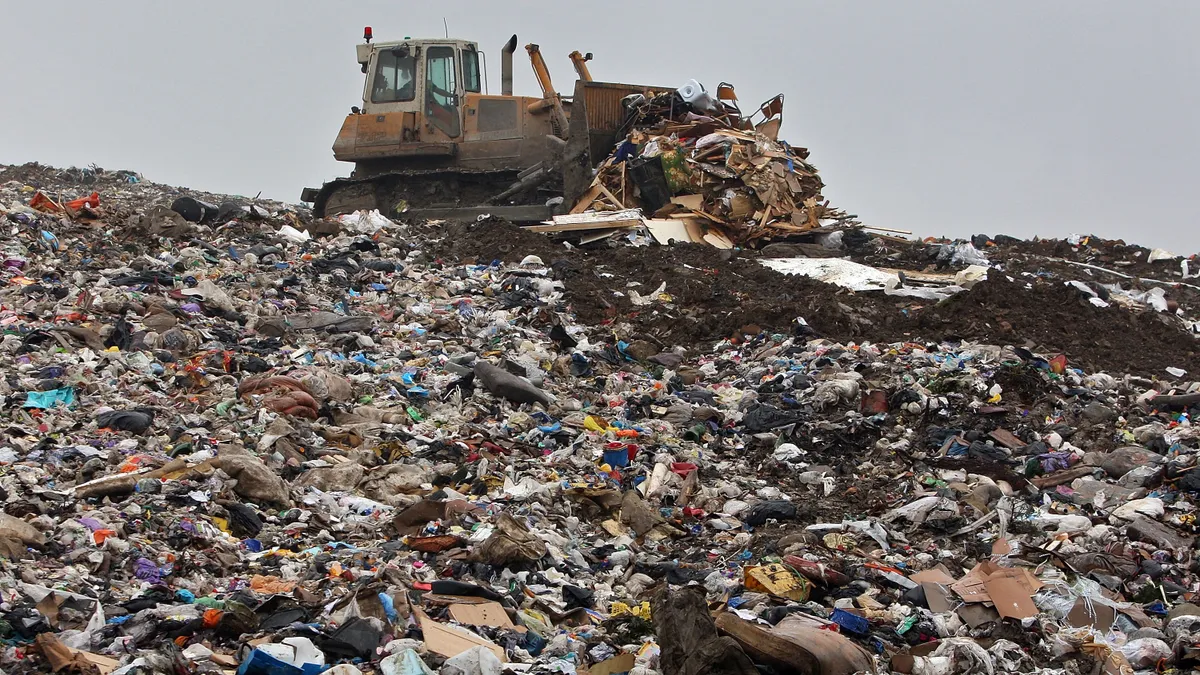Dive Brief:
- The California Public Utilities Commission (CPUC) last week approved biomethane procurement targets for utilities in a bid to meet the broader goal of reducing methane and other short-lived climate pollutants 40% by the end of the decade.
- The agency's decision included both short-term and medium-term goals, including a total annual procurement target of 72.8 billion cubic feet of biomethane by 2030, equating to approximately 12% of the gas used by residences and small businesses in 2020.
- "The procurement that will result from the decision will reduce what are otherwise uncontrolled methane and black carbon emissions in several sectors of the economy – agricultural, landfill and waste sectors – and collectively, these sectors are responsible for over three-quarters of the state's methane emissions," CPUC Commissioner Clifford Rechtschaffen said at the agency's Feb. 24 meeting.
Dive Insight:
Biomethane is produced through the process of anaerobic decomposition of organic matter, such as from landfills and wastewater treatment facilities, which is then purified to the point where it can be injected into a gas pipeline as a replacement for natural gas. This process prevents the methane — a potent short-lived climate pollutant — from being released into the atmosphere.
In 2018, the California legislature passed Senate Bill 1440, which required the CPUC to consider adopting biomethane targets for utilities. The decision ultimately approved by the commission adopts a 2025 goal of procuring 17.6 billion cubic feet of biomethane annually, which according to the agency would divert 8 million tons of organic waste from landfills every year. That target will be divided among utilities in proportion to their share of natural gas deliveries. By 2030, the overall target increases to 72.8 billion cubic feet annually.
The biomethane procurement program is "carefully crafted" to achieve the state's short-lived climate pollutant reduction goals, Rechtschaffen said.
"They are far more potent than carbon dioxide, and slowing down their growth is one of the most effective ways to arrest the inexorable pace of climate change," he added.
Representatives for Earthjustice, however, raised concerns that the commission did not conduct a thorough assessment of the cost effectiveness of biomethane before setting the procurement targets.
"This was a botched process. The statute says very clearly that the commission should first evaluate whether any procurement targets are a cost effective means of reducing short-lived climate pollutants, and the commission never made such an evaluation, and just jumped to the finding of cost effectiveness," said Nina Robertson, senior attorney with Earthjustice.
The decision approved by commissioners stated that while the biomethane targets meet the "threshold statutory requirements," more work would be needed to make sure that the individual contracts that utilities enter into are cost effective. Accordingly, it requires the utilities to create a "standard biomethane procurement methodology" to evaluate the cost effectiveness of biomethane contracts, as well as to conduct a workshop on it within 45 days of the decision's approval.
"I intend to keep a sharp focus on those cost effectiveness processes, with an eye toward doing everything we can to minimize impacts on ratepayers," CPUC President Alice Busching Reynolds said at the Feb. 24 meeting.
Another concern is that "there is a very, very, very small supply of genuine waste methane – methane that can't be really easily avoided in any other way, where capturing and using that methane is the most environmentally beneficial outcome," said Sasan Saadat, senior research and policy analyst with Earthjustice.
That supply would be best focused in sectors that are harder to electrify, he said.
"So we don't think [the CPUC's] approach takes the climate system and the energy system at a bird's-eye view and sees where is the most socially optimal place to devote this very scarce resource," Saadat added.















